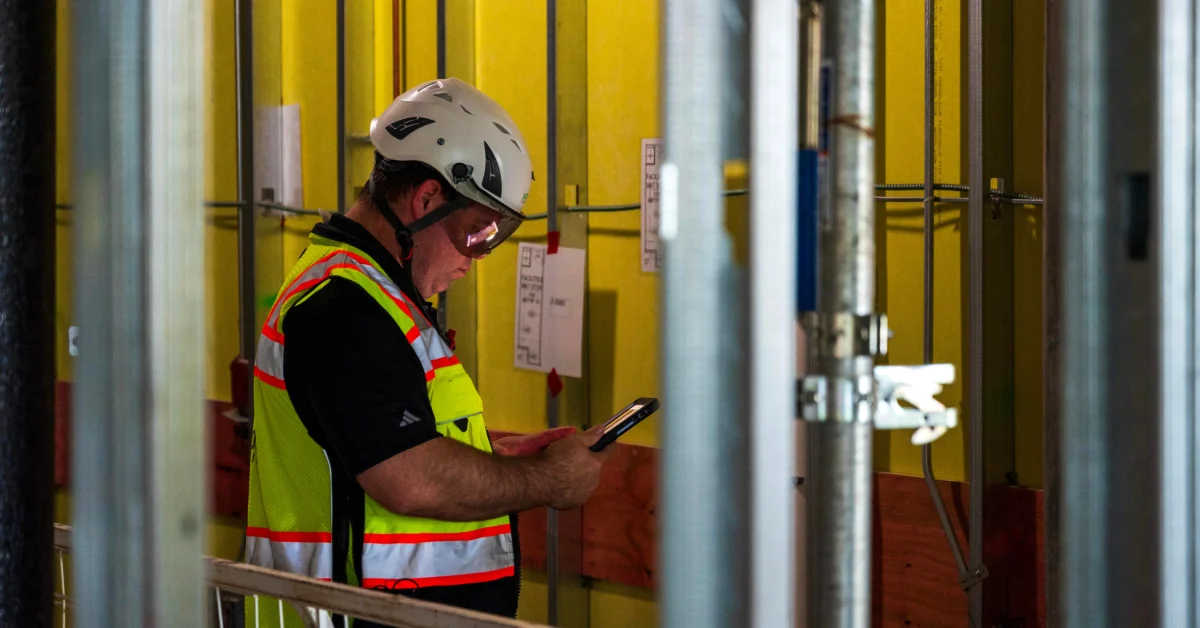Compliance, Complexity, and Cleanrooms: The AR Solution for Pharma Builds

Table of Contents
Share this post
The pharmaceutical industry is witnessing a wave of major investments in new manufacturing facilities in North America and Europe.
In Q4 2023, there were 61 new planned pharmaceutical construction projects in North America, including 14 new construction projects, 18 expansions, and 29 renovations/equipment upgrades.
The largest was a $229 million expansion by National Resilience, Inc. in Ohio.
In November 2023, Eli Lilly announced plans to build a new $2.5 billion manufacturing facility in Alzey, Germany to produce injectable drugs and medical devices.
Additionally, in January 2024, Boehringer Ingelheim announced a €120 million investment to expand and upgrade its manufacturing plant in Koropi, Greece.
In pharmaceutical facility construction, adhering to regulations, optimizing efficiency, and maintaining rigorous safety measures are more than important.
They’re a must.
And let’s not forget the time element here.
Every milestone needs to be achieved before the clock ticks down to zero.
While on the quality side, so much as a single error can cascade into delays, budget overruns, and even regulatory penalties.
Unlike standard construction projects, building pharmaceutical facilities demands meeting stringent regulatory requirements, managing the integration of a range of complex systems, while making sure that every aspect of the design is built with exacting care.
Sounds daunting. And it can be.
Traditional construction methods often fall short when it comes to meeting such steep challenges.
This can lead to misalignments between blueprints and on-site work, missed deadlines, and even loss of compliance.
But now, Augmented Reality (AR) is being brought in to help bridge these gaps.
This technology gives construction teams a way to visualize their projects and bring the digital world of BIM (Building Information Modeling) directly to the construction site.
How AR is Being Used in Construction
Augmented reality (AR) can be thought of as “upgrading” real-world environments by overlaying digital models atop them, allowing users to view and interact with virtual elements.
In construction, AR is reshaping how teams work with project plans, giving them a dynamic view of the building designs, to see how they align with actual site conditions.
GAMMA AR is one of the leading solutions in this respect.
An intuitive tool that enables users to visualize BIM models directly on-site via their mobile devices, it helps align these 3D plans with the realities of the construction project.
By overlaying the BIM model onto the physical site, GAMMA AR lets teams quickly and easily compare the design plans with ongoing construction progress as they stand in front of each component of the build.
Overcoming Key Obstacles in Pharmaceutical Construction with AR
Pharmaceutical construction presents a unique set of challenges that demand precision as well as adherence to strict standards.
Augmented Reality (AR) technologies, such as GAMMA AR, offer solutions that help overcome these hurdles.
Regulatory Compliance: Upholding regulatory compliance is crucial in pharmaceutical construction.
Using AR, teams can overlay digital models on-site, allowing them to visualize installations right where and how they’re supposed to be.
This helps prevent delays, fines, and non-compliance issues from ever arising.
Integration of Complex Systems: Integrating mechanical, electrical, and plumbing (MEP) systems is a key challenge due to their overlapping functionalities.
AR facilitates the detection and resolution of any potential system clashes early by visualizing MEP elements within their intended physical environment before construction begins, reducing if not avoiding costly rework.
Cleanroom Construction and Equipment Placement: Cleanrooms are integral to pharmaceutical facilities, requiring flawless construction to prevent contamination.
AR helps workers follow cleanroom layouts precisely and ensures equipment is positioned accurately, reducing the risk of deviations from design specs that could lead to contamination or delays.
Enhanced Team Communication: Miscommunications between design and on-site teams can derail or at least delay a project.
AR synchronizes communication across teams, making it easier and faster for any issues or discrepancies to be identified and addressed, leading to smoother coordination and resolutions.
Documentation and Quality Control: AR tools enable comprehensive quality control by allowing teams to detect deviations between planned and actual construction.
This allows for faster, more effective corrections, maintaining alignment with design standards and site realities, while minimizing the likelihood of expensive errors.
By leveraging AR technologies, construction teams can address these critical obstacles more efficiently, thereby raising the certainty that pharmaceutical facilities get built to the highest standards with minimal disruptions.
Augmented Reality (AR) tools like GAMMA AR can play a crucial role in helping construction teams tackle the complexities of regulatory compliance, systems coordination, cleanroom precision, and effective communication.
By giving teams the power to visualize their projects in rich detail at the jobsite, AR can help catch potential issues early and keep everyone aligned.
As the industry continues to advance, those who adopt a holistic approach, working with innovative solutions such as AR alongside proven best practices, will be well-positioned to navigate even the most stringent requirements.
Ready to Try GAMMA AR for Your Pharmaceutical Construction Project?
Download a free trial of GAMMA AR from the App Store or Google Play and explore firsthand how its advanced features can optimize your workflow and improve project outcomes.
For a personalized demo or to learn more about how AR can revolutionize your team’s efficiency and precision, get in touch with us today—let’s build the future together.
